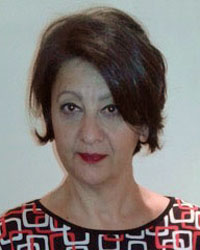17 Feb Alexander Technique for Parkinson’s By Antonella Cavallone

The workshop, entitled “Alexander Technique for Parkinson’s: Working with People living with Parkinson’s disease (PlwPD) and their Carers”, organised by the Poise Project, was part of the “Alexander Technique for Parkinson’s International Awareness Project” to bring the Technique to the Parkinson’s community in the UK.
Over the two days, the workshop covered a wide range of areas, both scientific and practical. The first day’s main focus was to learn about the latest scientific research on Parkinson’s, the particular needs of People living with Parkinson’s (PlwPD) and their care partners, and to learn ways to successfully apply Alexander Principles when working with this community in both one-to-one and group settings. This first day also included working with a small group of invited people living with Parkinson’s and their partners.
The second day’s main focus was practical: a five-hour workshop, on which we were divided into small groups to work with a larger invited group of people living with Parkinson’s disease (PlwPD) and their care partners from the local community. We gave instructions and hands-on guidance, with the goal of the group learning self-management strategies that improve and, as much as possible, restore functional movement patterns.
The groups looked at various activities and subjects, including: Balance and Gait; Undoing Stress and Anxiety & Strategies for Managing Sleep Interruption; Vocal Volume; and Alexander Technique and Exercise.
I personally worked with the groups looking at Balance and Gait and AT and Exercise. We explored ways of thinking about weight shift when stepping forward in order to feel secure on the standing foot – how giving oneself time to plan an action can improve the quality of the movement. We also looked at letting one’s head release away from the body to support lengthening of the spine in bending movements – how to release our nodding joint to allow freedom of the neck that facilitates head movements while exercising and functional movement in general.
Some of the things said that made a particular impression on me were:
· I can move, I have the tools in me to do this – the Alexander Principles help with that
· The Alexander Technique helps with agency – to live in the body that we have in a way that is with more ease
· The Alexander Technique Posture is Dynamic Posture
· The Alexander Technique helps moment by moment to conduct ourselves in a better orientated state
· If you create the conditions for things to work well (Alexander Principles help with that), the right things will happen – it’s just the law of physics!
I felt I learned a lot from the organisers, Monika Gross, Glenna Batson, and Daniel Shepherd, from my fellow AT teachers participating with me and, most of all, from all the volunteers with Parkinson’s and their carers who came to spend the day with us. We heard moving stories of courage, independence and selfless acts. All in all, the weekend was an entirely rewarding experience.

Sorry, the comment form is closed at this time.